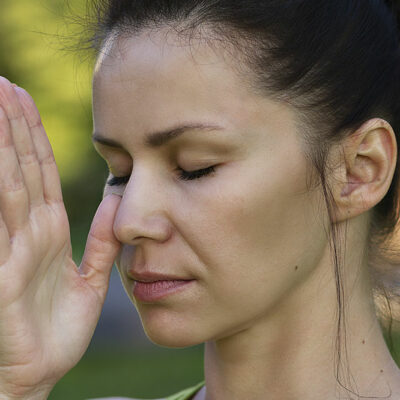7 exercises to sweat the migraine away

Exercising has a lot of benefits, some we are already aware of, some most of us overlook. Either way, its importance in our lives is not a secret. Why, then, do we choose to scroll through our phones or mindlessly jump between shows instead of using that time to build a healthier mind and body? Regular exercise not only helps you build muscles, it also helps you build resistance to various issues, such as migraines. So, here are seven exercises to sweat the migraine attack away.
Stretching
Stretching for as little as 10 minutes daily can significantly improve your headache. Migraines can be a pain to deal with, and exercising might be the last thing you want to do when in pain. When you don’t want to take time and exercise, try some simple stretches to help relieve your migraine. It will help improve blood circulation and, in turn, ease the tension. Some simple and effective stretches include:
Chin tucks
This is most effective in people that work at a desk and have poor posture as their constant companion. Chin tucks help realign the neck, head, and shoulders, improving your posture. Sit with your back against the back of the chair or the wall with your spine long while performing this exercise.
Upper trapezius stretching
With the shoulders tense and hunched upward all the time, the trapezius muscle turns stiff. Stretching this muscle can help loosen your shoulders and help find relief from migraine. Start off the stretch in an upright position. Bring your right ear down to your right shoulder without hiking up either of your shoulders. Next, bring your right hand to the left side of your head and gently pull down. Hold this position for a few seconds and feel the stretch in your left shoulder region. Repeat on the other side.
Yoga
The American Headache Society reiterates that factors like poor posture, muscle tightness, and stress can contribute to the worsening of headaches. Practicing yoga regularly can help improve posture, relax muscles, and assist in stress management. Yoga is also known as an activity that helps the mind, body, and soul. This makes it all the more beneficial for people with stress, anxiety, and mood swings. There are different forms of yoga you can practice that involve stretching, holding poses, body movement, and breath work. One such form of yoga that is especially beneficial for people with headaches is restorative yoga. It involves the use of articles like towels, blankets, blocks, mats, and others. For beginners, it is crucial to start off with a form of yoga that does not require you to hold a posture for long.
Before you start off with practice, speak to your doctor, find a professional trainer or instructor, speak to them about your condition, and always start off with a beginner’s class. Even if you do know yoga, a beginner’s class will help you perfect your form and coordinate your breathing.
Deep breathing
If you take a closer look, you might be surprised by the number of people who do not breathe correctly. Sadly, a lot of us do not know the correct way and do not use the diaphragm. Not paying enough attention to your breaths might also be a reason for your frequent migraines. Shallow fast breaths or holding your breath repeatedly can be a sign of being stressed. This can compromise the amount of oxygen the body has access to. However, being stressed is also when the muscles require more oxygen supply. One of the easiest ways of practicing mindful breathing is by placing one hand just below the ribs and the other on your chest. If you are breathing properly, your diaphragm and lungs will expand and your lower hand will extend outward with the stomach. Practice this exercise a few times each day and observe how it relaxes you and relieves your migraine pain.
Cardiovascular exercise
Cardiovascular exercises, also known as aerobic exercise, are responsible for giving the heart and lungs a thorough workout. Cardio reduces stress, tension, anger, and anxiety, all of which can be a trigger for migraine. These exercises are also responsible for improving blood flow to the brain and other organs. It causes the body to release endorphins, a compound that is also known as the body’s natural pain killer. People who experience migraines because of poor sleep can also benefit from cardiovascular activities.
Strength training
As discussed earlier, poor posture, muscle stiffness, and tightness are all possible triggers for migraine. Exercises that help build your strength and muscles can come in handy if you are a frequent migraine sufferer. This includes bodyweight exercises, resistance band training, floor exercises, and weight lifting. All of these can help reduce migraine pain, decrease the intensity, and lower the frequency of these episodes. Having strong neck and back muscles will also bring down the possibility of having to deal with tension headaches that result from poor posture or too much stress being stored in the muscles.
Pilates
Pilates works on improving strength, muscle tone, posture, and muscle capacity. People that regularly practice Pilates have better stamina and are able to relax. Its ability to help you relax is a main reason why it helps tackle migraine pains. Posture improvement is yet another reason why it is considered great for people with tension migraines.
Tai Chi
If you want to learn a form of exercise that combines movement and controlled breathing but is more intense than yoga, Tai Chi might be the right choice for you. It is a form of martial arts that will give you a thorough workout while improving your migraine pain. Tai Chi is also known for its role in improving blood pressure, lowering stress levels, and improving your overall health. Since it exhausts the body, it is also a great choice for people that often have migraines because of improper sleep.


